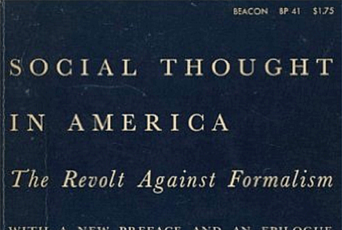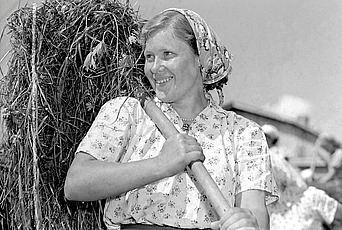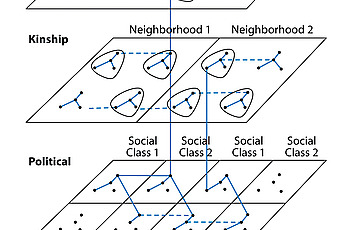Red Hangover: Legacies of Twentieth-Century Communism
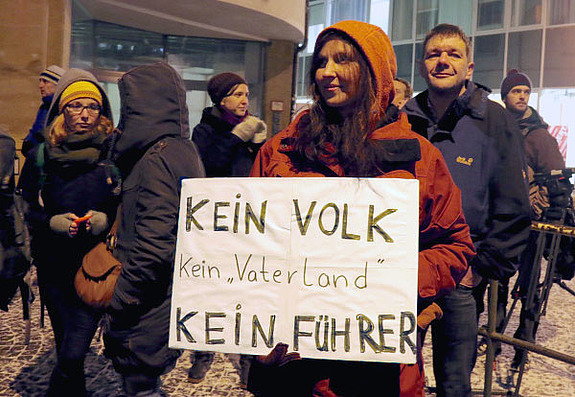
Two pairs of earrings, four bracelets, and a mixtape inspired me to write this book. I was in the Stadtmuseum in the German city of Jena, peering into the various display cases of an exhibit called Freundschaft! Mythos und Realität im Alltag der DDR (Friendship! Myth and reality in everyday life in the GDR [German Democratic Republic]). The exhibit ruminated on the official and unofficial uses of the word “friendship” in the context of communist East Germany between 1949 and 1989. In one case, the museum’s curators displayed the personal items of a teenage girl who had gone to a Free German Youth summer camp in 1985. There, accompanying some photos and a letter she sent home to her parents, sat a white cassette tape, some plastic bracelets, and two pairs of oversized, cheap earrings, the kind once fashionable in the mid-1980s when every girl's hair was two stories too high.
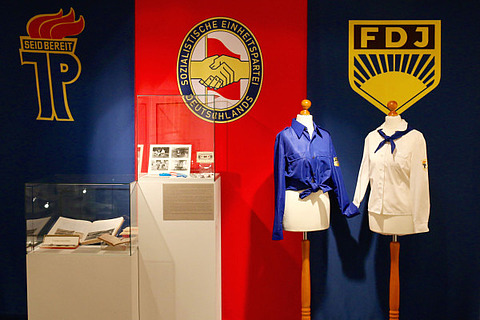
Back in 1985, I spent several weeks of my summer at a camp in the Cuyamaca Mountains one hour east of San Diego. When I left home, I remember packing several pairs of the same horrible earrings, some plastic bangles, and a stack of mixtapes with my favorite songs recorded off the local Top 40 radio station. Standing in Jena thirty years later, I experienced one of those moments of radical empathy, and tried to imagine what my life would have been like if I’d gone to summer camp in communist East Germany rather than in capitalist California. This girl and I might have shared the same passion for similar material objects, but we would have been ideological enemies, surviving our adolescences on different sides of the Iron Curtain.
From the placard on the display case, I understood that this girl was born in 1971, one year after me. Somewhere out there, this girl was now a woman about my age, and I longed to talk to her, to ask her what she remembered about that summer of 1985, and how things had worked out for her. This German girl would have been eighteen when the Berlin Wall fell, and nineteen when her country ceased to exist. She would have just graduated from secondary school, and probably listened to Madonna and Fine Young Cannibals as I did: “Express Yourself,” “Like a Prayer,” and “She Drives Me Crazy.” But where I had the luxury of geopolitical continuity in my personal life, this East German faced a young adulthood of dramatic social and economic upheaval.
When I left the museum, I wandered through the cobblestone alleyways leading off the main market square. I saw posters for two upcoming demonstrations in Jena. The right-wing, anti-immigrant political party Alternative for Germany (AfD) would organize a rally and a march in the Marktplatz while Germany’s left-wing party, Die Linke (The Left), in a coalition with other centrist and leftist parties, would organize a counterdemonstration in front of the church. The counterprotesters had plastered the small city with posters saying “FCK AFD” and “refugees welcome,” and I guessed that the center/left demonstrators would outnumber their right-wing counterparts.
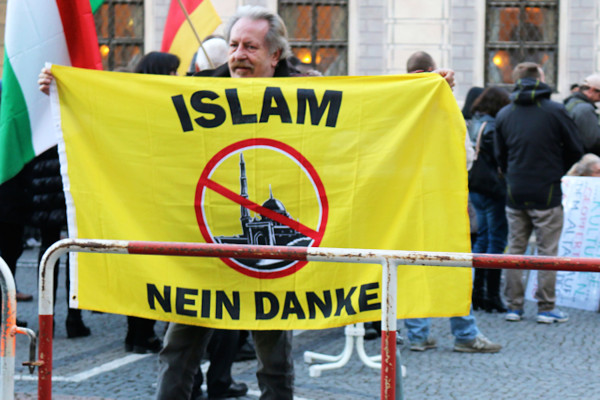
But after the November 2015 terrorist attacks in Paris, and the spate of sexual assaults on women in Cologne on New Year's Eve, many Germans feared for their future. The political appeal of the far right increased across the country, but particularly in the former states of the now-defunct Deutsche Demokratische Republik. In the eastern city of Dresden, “concerned citizens” formed a group called PEGIDA, which stood for Patriotische Europäer gegen die Islamisierung des Abendlandes (Patriotic Europeans against the Islamicization of the Occident).1 Many ordinary men and women frustrated with their governments’ open-door asylum policies supported PEGIDA. On January 11, 2016, as LEGIDA (the Leipzig branch of PEGIDA) celebrated its one-year anniversary, about two hundred masked neo-Nazis marched through the immigrant-friendly neighborhood of Connewitz, smashing cars and windows with axes and baseball bats.2 One month later, in the sleepy village of Clausnitz, a few kilometers from the Czech border, an angry mob of Germans tried to prevent a bus full of refugees from reaching a shelter.3 Men and women in the crowd shouted “Wir sind das Volk!” (We are the people), a slogan used by anticommunist protestors in 1989. Twenty-five years ago, this chant reminded the leaders of the GDR that democracy meant rule by the people. Two days after the incident in Clausnitz, a hotel destined to house Muslim refugees caught fire in the Saxon town of Bautzen.4 Onlookers cheered as the roof burned. Federal politicians condemned the growth of right-wing xenophobia in the former states of the GDR as ever more eastern Germans felt their voices ignored. As I walked through the streets of Jena back to my university apartment, I wondered about that girl in the museum and the woman she had become. If she still lived in town, which rally would she be attending? With which side would she sympathize, and why?
The year 2017 marks the one hundredth anniversary of the Russian Revolution and the creation of the world's first socialist state. Much of the twentieth century was defined by the presence of this Soviet superpower and its challenge to the political economy of greed and exploitation that underpinned the capitalist system. Built on ideals of self-determinism and social egalitarianism, the Soviet Union became a symbolic beacon of hope not only to people struggling against European imperialism and continued colonial domination, but also to Western workers locked in labor conflicts with avaricious employers. Even after the cruel brutalities of Stalinism and the economic deficiencies of “really existing socialism”5 became clear, leftists continued to imagine alternative pathways to pure communism, the supposed highest stage of human history. When Eastern Bloc communism collapsed between 1989 and 1991, the whole project seemed consigned to the dustbin of history. The entire decade of the 1990s was one big ideological gloat-fest for the Cold War's winners. Ding dong, the Reds are dead.
The end of the Cold War created an unprecedented opportunity to create a more stable, peaceful, and equitable world, for the Western countries to show moral strength and help rebuild the economies of the former Eastern Bloc in the way they once assisted the West Germans and the Japanese after World War II. Instead, the ideological war against communism continued as if the Cold War had never ended. The communist ideal became straitjacketed to the horrors of Stalinism for at least half a century. Of course, none of the twentieth-century experiments with the communist ideal ever came close to achieving communism in the Marxist sense, a future moment when the state would wither away. To be technically correct, the countries of Eastern Europe should be called state socialist countries, in the sense that the nationalized means of production were always controlled by a centralized state serving as a dictatorship of the proletariat. For Karl Marx, this was only a stage on the way to true communism, a necessary stepping-stone to a brighter future. But because they justified their actions in terms of the communist ideal, and because scholars and politicians in the West always referred to these countries as “communist,” I use the terms “communist” and “socialist” interchangeably throughout the book.
Since the late 1990s, I’ve been doing research and writing books about the experiences of ordinary people who lived through the end of the Cold War in Eastern Europe. My work endeavored to capture a recent past, one that would soon fade and be forgotten. But that day in Jena, I felt the past alive in the present and understood that the legacies of the fall of communism infused current European political realities. Why else would East Germans in 2016 resurrect a protest slogan from 1989? Indeed, once I started thinking about it, all of the major crises of the previous year——the Greek debt crisis, the Russian annexation of Crimea, the Syrian civil war, the rise of the Islamic State in Iraq, and the massive increase in migration to Europe——could be linked back to mistakes made after the collapse of the Eastern Bloc when fantasies about the world-historic triumph of free markets and liberal democracy blinded Western leaders to the human costs of regime change. If the communist ideal had become tainted by its association with twentieth-century Eastern European regimes, today the democratic ideal has been increasingly sullied by its links to neoliberal capitalism. How much violence and human misery has been justified in the name of promoting democracy?
1 “Concerned citizens” in the description for PEGIDA supporters used by Dresden’s mayor in a 2016 interview with Deutsche Welle: Hildegard Michel-Hamm, “Xenophobia in Germany: Interview,” Deutsche Welle, February 2, 2016, http://dw.com/p/1I3f7.
2 Maximillian Gerl, “Neonazi-Krawalle in Leipzig: Verwüstet,” Der Spiegel, January 12, 2016, www.spiegel.de/politik/deutschland/leipzig-connewitz-viele-scherben-vie…. Russia Today also covered the event and posted videos of the violence: “Over 100 Arrested, Shops Vandalized in Leipzig amid LEGIDA Birthday Demonstrations,” Russia Today, January 12, 2016, www.rt.com/news/328586-legida-anti-migrant-demonstration-rampage.
3 Christoph Titz, “Busattacke in Clausnitz: Ein Dorf wundert sich,” Der Spiegel, February 21, 2016, www.spiegel.de/politik/deutschland/clausnitz-und-die-attacke-auf-fluech…. Video of the event can be seen here: “‘Shameful’ Video of Mob Blocking a Refugee Bus in Germany Sparks Outrage,” Deutsche Welle, February 19, 2016, www.dw.com/en/shameful-video-of-mob-blocking-a-refugee-bus-in-germany-s…. Tobias Dorfer, “Nach Clausnitz und Bautzen: Auf die Straße!” Zeit Online, February 28, 2016, www.zeit.de/gesellschaft/zeitgeschehen/2016-02/clausnitz-bautzen-reakti….
4 Dirk Pilz, “Rechte Gewalt Kein schlimmer Land als Sachsen,” Berliner Zeitung, February 28, 2016, www.berliner-zeitung.de/politik/rechte-gewalt-kein-schlimmer-land-als-s….
5 “Really existing socialism” or “actually existing socialism” was a term embraced during the Brezhnev era to refer to the realities of Soviet-style central planning as opposed to Marxist ideals of socialism as a step on the way to pure communism.
